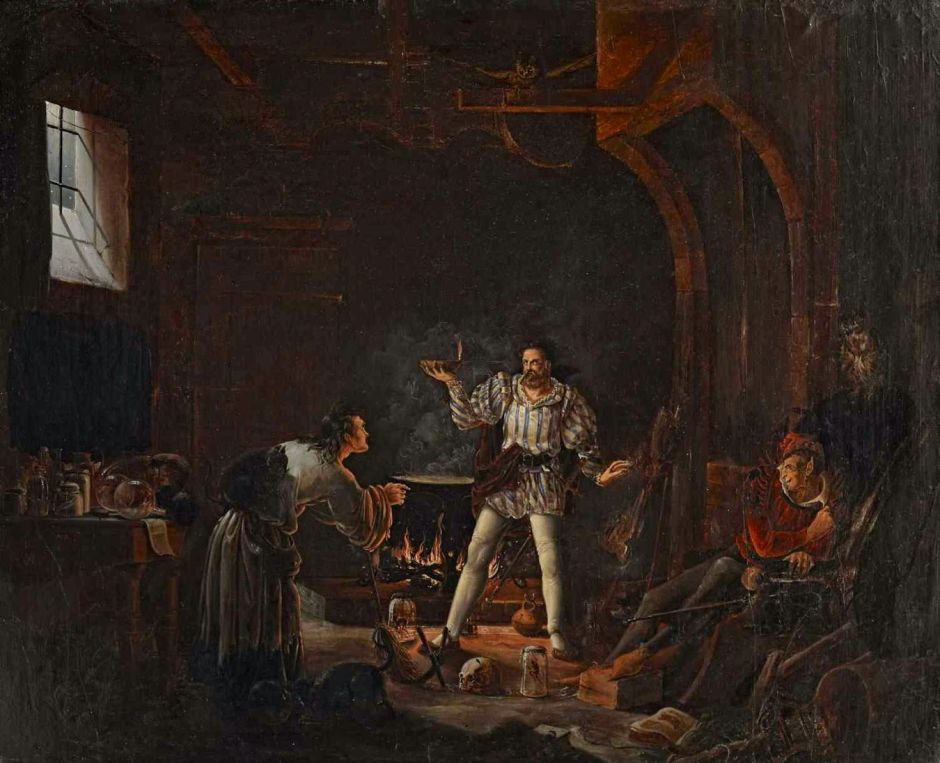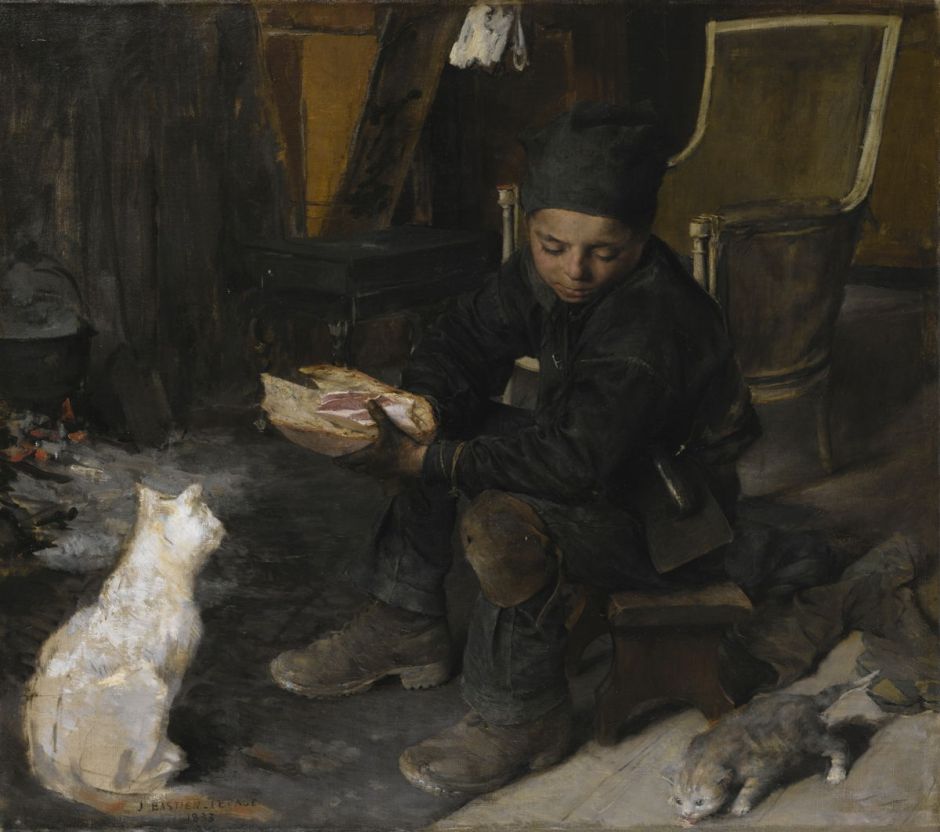I grew up before most houses in the UK had the benefit of central heating, with boilers or furnaces to warm them through the winter. We still relied upon a fire in an open hearth, and the sight of burning wood or coal came to symbolise warmth. I still remember a TV advertising campaign to encourage open fires with the slogan Come home to a real fire, accompanied by the sight of flames flickering over glowing coals.
This weekend I celebrate that image of warmth in a selection of paintings, today from the period up to the late nineteenth century, and tomorrow taking it into the twentieth.

In the grandest of mansions the biggest fire was to be found in the kitchens, as shown by the studio of Marten van Cleve in this Kitchen Interior from about 1565. Suspended above the flames are iron supports for heating cooking vessels and roasting meat, and above the fireplace are some of the accessories used. This is a curious reversal of the more popular view of a family eating, with a glimpse through a doorway into the kitchen: the dining room is shown at the left.

In Goethe’s play Faust a “witch’s kitchen” is the scene for Faust’s Rejuvenation (The Witch’s Kitchen) in this undated and anonymous painting. Mephistopheles watches at the right as the sceptical Faust stands inside the witch’s magic circle, with the requisite open hearth behind them.

Fires also became incorporated into folk tales and fables, here in Edwin Henry Landseer’s retelling of La Fontaine’s fable of the Monkey and the Cat in The Cat’s Paw from about 1824. This shows the climax of this tale thought to have originated in around 1560.
Bertrand the monkey was roasting chestnuts in the embers of a fire. Rather than risk burning himself retrieving the nuts from the heat, he promised Raton the cat a share of them if the cat would scoop them out for him. The cat agreed, and as Bertrand ate the chestnuts when they emerged from the fire, the cat’s paw became more and more burned. Before the cat could claim its reward, the pair were disturbed by a maid. The monkey then profited from the cat’s efforts and suffering, but the cat was cheated from enjoying its share.

Jules Breton’s Grandfather’s Birthday (1864) shows three generations of a Courrières family living in modest comfort, although their floors are made of bare and worn tiles, furniture is sparse, and the fire is hardly alight. One of the grandchildren is just about to present their grandpa with a simple birthday cake, no icing, as another of the women prepares a celebratory meal in the kitchen. Maybe firewood might have been a good present too.

Fires were also becoming more widely confined within cast iron stoves, as painted by Paul Cézanne in Stove in the Studio from about 1865. Heaped at its door is old ash ready for disposal. His canvas may have been placed near to the stove in an attempt to keep it drier during damp winter weather, and to accelerate the drying of its paint.

An open fire plays a role in Edgar Degas’ enigmatic narrative painting Interior, also known as The Interior and even The Rape, from 1868-69. The man and woman in this bedroom are clearly a couple, but just what they’re up to remains obscure. There’s a mature fire burning in the fireplace behind the woman and the lamp.

Even the poorest could at times warm themselves in front of a fire. Jules Bastien-Lepage’s moving Little Chimneysweep (Damvillers), painted shortly before his death, might appear destitute, but he has been able to make a small fire to warm himself and his cats. Ironically, this young boy made his meagre living from cleaning the chimneys above the fires of the more wealthy.

Judging by the thin summer dress worn by the young woman reading in Francis Davis Millet’s Cosey Corner from 1884, the fire burning in the open hearth is primarily to boil water in the large black kettle for her cup of tea.

